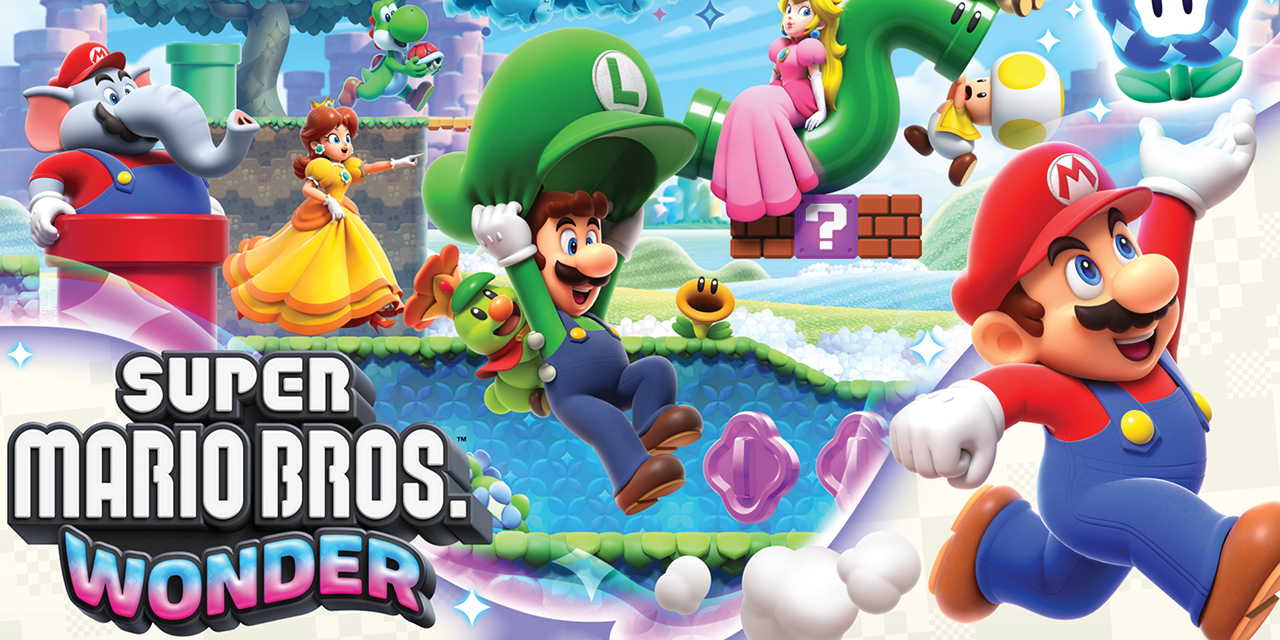When Super Mario World 2: Yoshi’s Island came out in 1995, it would be the last time in a long time before a 2D Mario game had any soul in it. In 2006, New Super Mario Bros. came out on the Nintendo DS and it seemed like that would be the template for the foreseeable future.
New Super Mario Bros. Wii, New Super Mario Bros. 2 for 3DS, and the Wii U’s New Super Mario Bros. U were not bad games, but they all felt like generic 2D Mario games. All of these felt cold and sterile like they came off a soulless assembly line. Putting each side by side, you would be hard-pressed to tell which one was which.
It took long enough, but the franchise has finally dropped all pretenses that these are ‘New‘, and have finally injected some desperately needed personality and genuine Super Mario charm. Could this be the ultimate 2D Mario game? Find out in this Super Mario Bros. Wonder review!
This is a review coupled with a supplemental video review. You can watch the video review or read the full review of the below:
Super Mario Bros. Wonder
Developer: Nintendo EPD
Publisher: Nintendo
Platforms: Switch
Release Date: October 20, 2023
Price: $59.99 USD
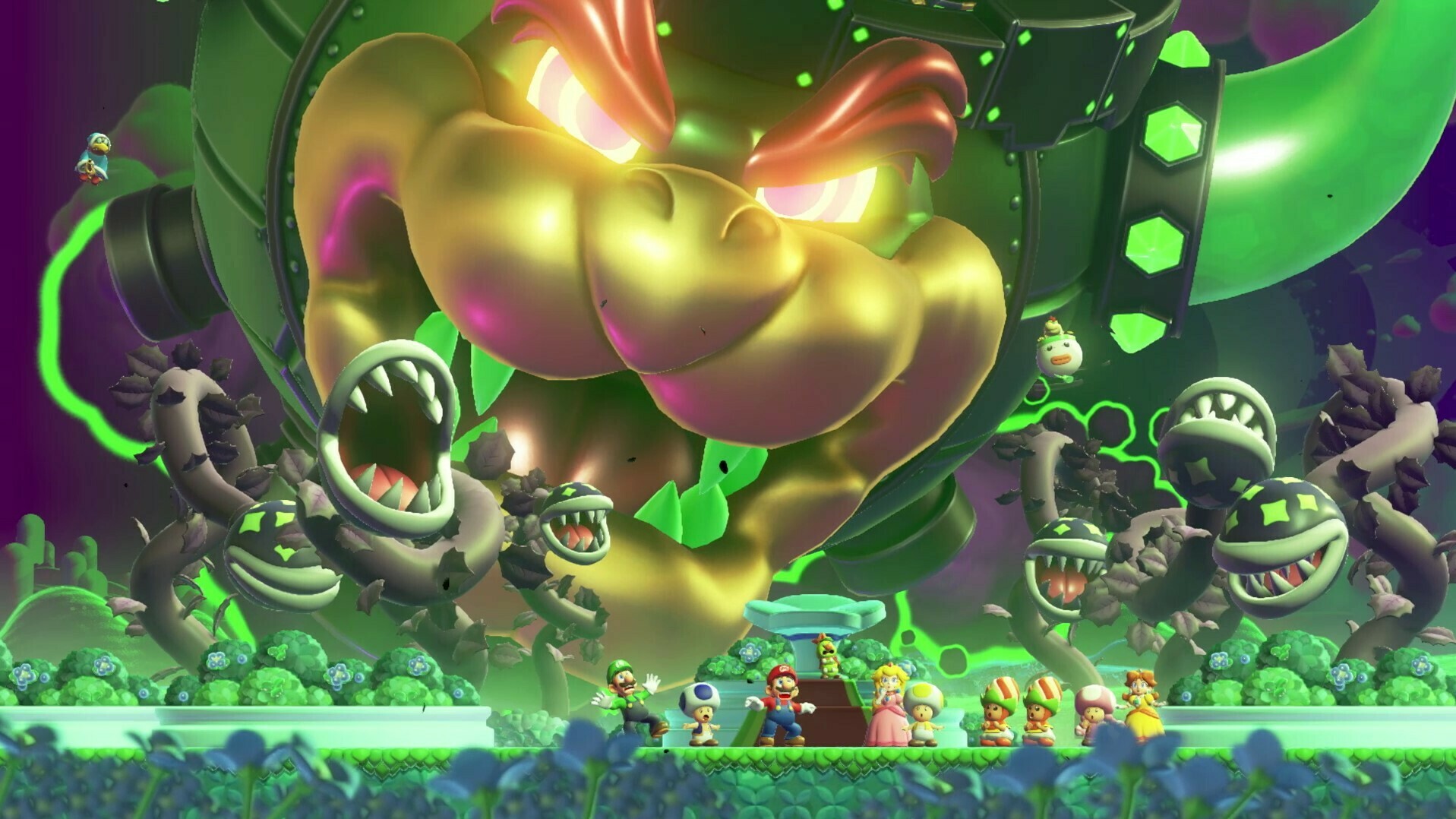
Like every 2D Mario game, Bowser is up to no good and he has taken over the Flower Kingdom by taking their Wonder Flower, transforming him into a hybrid Bowser-castle abomination. As always, it’s up to Mario and Luigi to collect a bunch of MacGuffins (Wonder Seeds) so they can free the Flower Kingdom from his domineering rule.
Mario and Luigi won’t be alone; Princess Peach, Princess Daisy, a couple of Toads, Toadette, four differently colored Yoshis, and Nabbit are all playable. Unlike in prior entries, all characters have the same handling and jump physics. The only notable differences are the Yoshis and Nabbit being invulnerable to most enemy attacks and that they can’t use power-ups.
The trade-off of nigh invulnerability is hardly worth it because the new power-ups are a lot of fun. By now everyone knows about the elephant transformation. Pachyderm form gives the gangs massive girth and weight which can affect some obstacles. Being able to store water in the trunk is useful for moments when you need to move water to extinguish some hot-heaty flames or to water a dry plant for some collectibles.
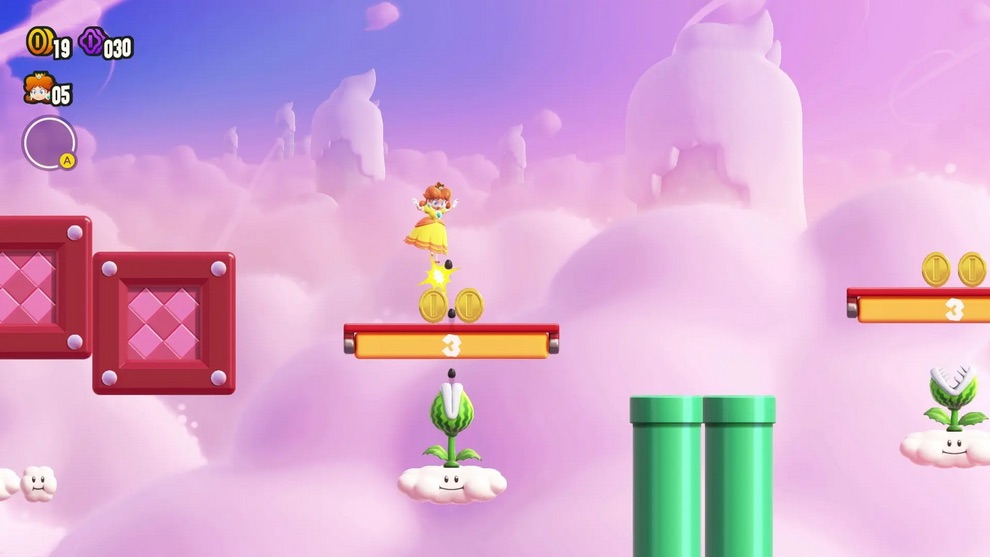
The bubble flower may seem slow and lame at first, but it may be one of the more technical power-ups in a 2D Mario game. Bubbles absorb most small foes, but the real fun of the bubbles is how they can be used to extend jumps since characters can bounce off them. These can be used to bypass some tricky areas in the right hands.
On top of the power-ups, there are the badges which are how players will be able to express their playstyle. While there are a couple that may be considered situational like the dolphin kick badge that boosts underwater swimming, most of the badges give a passive ability. Some also lean into a player’s preference for certain power-ups, like a badge that turns all power-ups into the drill hat.
Some of the ability badges are the playstyles of how some Mario characters used to play. There is a floaty high jump badge that makes the wearer have Luigi’s playability. The parachute cap is functionally like Princess Peach’s glide power. The crouching high jump was an ability from Super Mario Bros. 2. There is even a badge for double jumping.
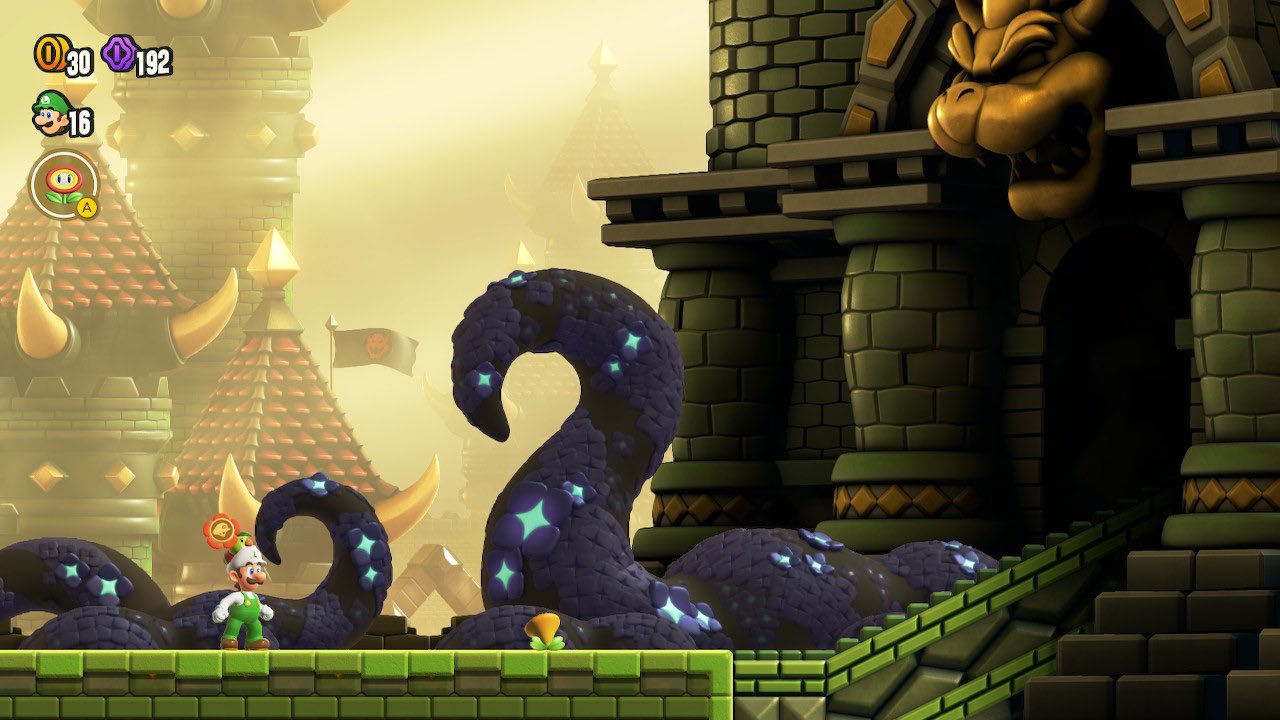
Badges also can make Super Mario Bros. Wonder harder, like the badge that makes the player character invisible or the badge that makes them uncontrollably fast. Being able to switch these out also adds a lot of replay value since many of these dramatically change the way you approach a level.
Super Mario Bros. Wonder‘s worlds and levels are by far some of the most inventive and creative ideas ever put into a Mario game. There is almost no telling what you’re going to see next because ideas are rarely reused and this keeps the gameplay’s variety unbelievably high. Sometimes you’ll want to keep playing just to see what Wonder will throw at you next.
The Wonder Seeds are Super Mario Bros. Wonder‘s main event. Every main stage has a Wonder Seed and sometimes they can be a little hidden to find. Once acquired, it is like taking a swig from Hunter S. Thompson’s brown bottle. This effectively transforms the entire level into a bonus game and the game never does the same thing twice.
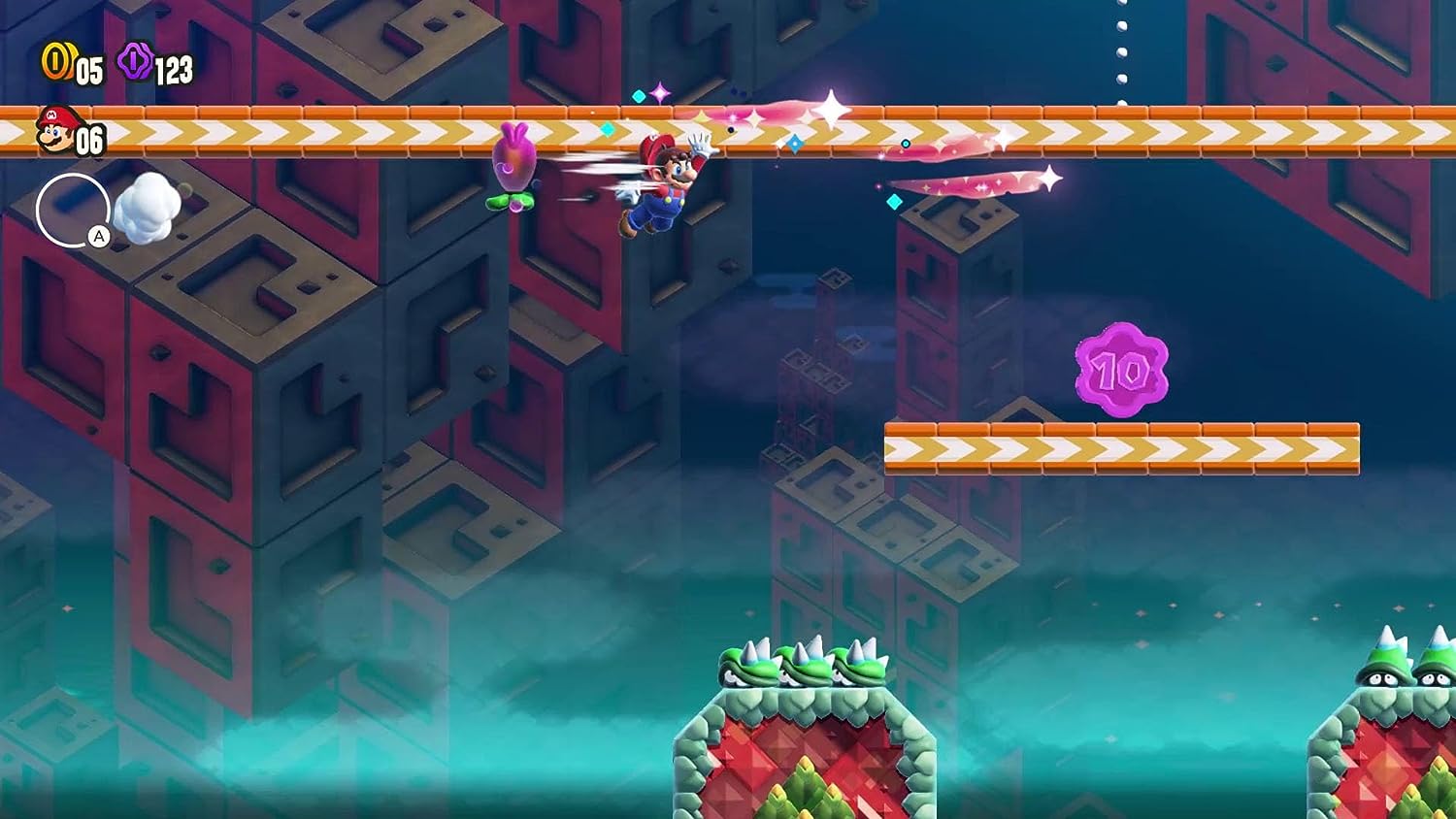
The effects of the Wonder Seeds can dramatically change the gameplay, like transforming into a helpless goomba or a sticky blob that can crawl on walls or round surfaces. Other times the Wonder effects can lead to absurd things like a musical number full of pirhana plants.
In the airship stages, the Wonder effect summons Bowser to begin sniping at the player. In rare instances, the gameplay changes to a top-down POV. Why would anyone want to subject themselves to these hallucinations? Because earning wonder seeds is how players progress through the overworld and unlock new areas.
Stages will always give the player at least one seed for completing it, but activating the wonder effects and making it through the challenge earns an extra seed. Some stages can be beaten in other ways and have hidden exits which is also another seed earned.
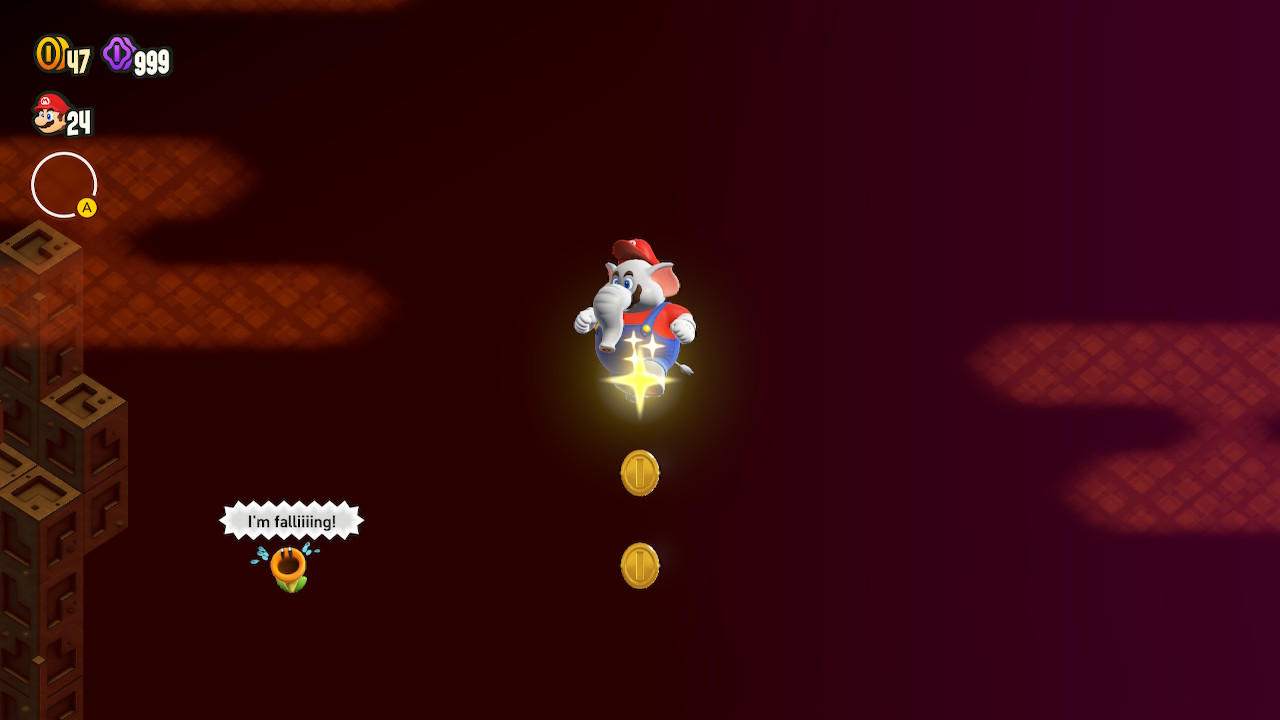
These moments are very imaginative and also always visually striking. Nintendo always had some influences from Lewis Carrol’s Through the Looking Glass and Alice in Wonderland, but these influences in Super Mario Bros. Wonder have never been more apparent.
It’s disappointing when Super Mario Bros. Wonder short-changes players with small ‘break time’ levels that don’t bring on the wonder. These stages are usually much shorter and are often repeated throughout the world.
These can be in the form of a race with Wriggler, or a puzzle-like area where players have to find hidden blocks. At other times, there are short stages that serve as badge challenges, requiring players to use a specific badge.
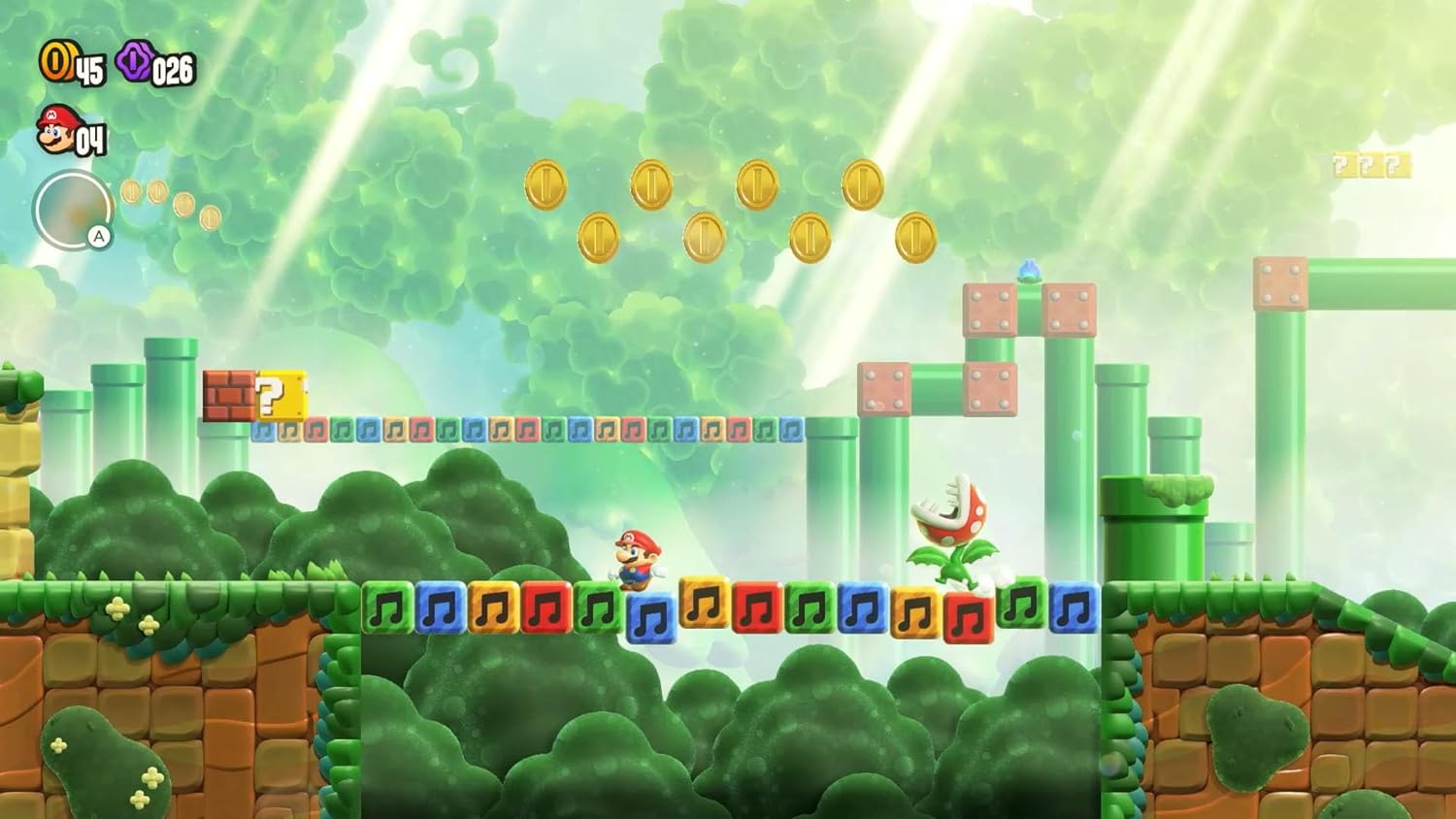
All of the short stages are generally more straightforward, and while none of them are necessarily bad, it’s surprising to find that a significant portion of them makes up almost half of Super Mario Bros. Wonder‘s nearly 80 levels. Worse yet, there are some stages where a Poplin will hand over a free seed without having to do anything.
The world map in Super Mario Bros. Wonder has also made dramatic improvements. The maps used to just be a visual representation of a stage select screen… which it still technically is, but everything in Wonder has to be imaginative and the map is no exception. It has taken on some metroidvania-like qualities now and players are free to play stages out of order.
The graphics in Super Mario Bros. Wonder are among the sharpest and most polished ever realized in a 2D platformer. In certain shots, it doesn’t even resemble a video game but rather resembles concept art. The characters are more expressive and lively than ever before, and this nuance in the animation can be attributed to some cheeky smudge frames and stretching techniques, typically seen in CGI animated films.
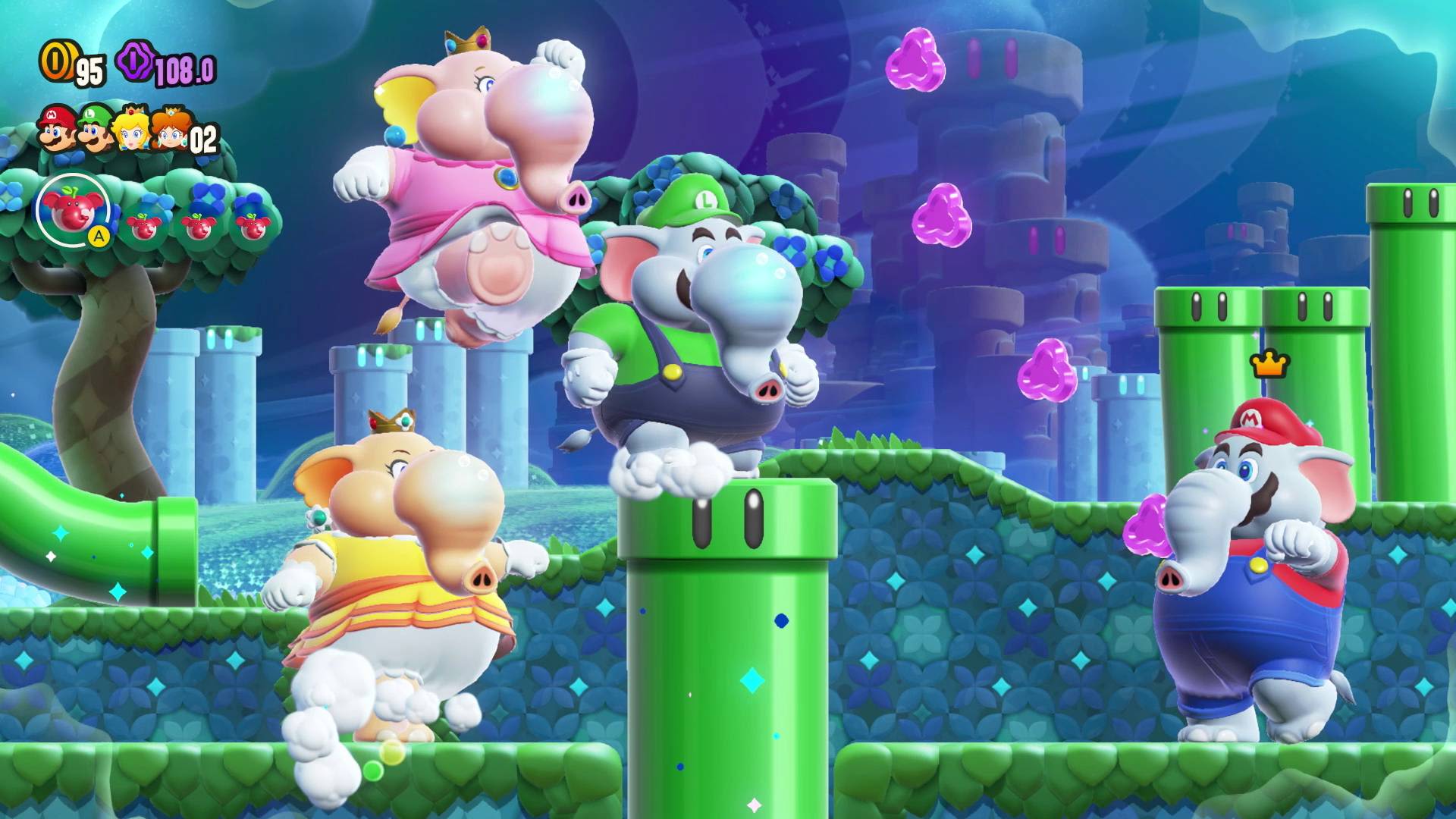
The polished visuals play a crucial role in the interplay between sound design and gameplay. The audible feedback during platforming, when combined with the physics, handling, and animation, creates a harmonious experience. This harmony is at the core of what makes any good 2D platformer, not just Super Mario.
This kind of attention to detail isn’t limited to small flourishes. They extend to the gameplay’s imaginative levels and catchy music. The new voices for Mario and Luigi will take some getting used to. Martinet can’t be the voice of the plumbers forever and this change was inevitable. Mario sounds younger and higher pitched than he has ever sounded, but he sounds like Mario.
Super Mario Bros. Wonder is bursting at the seams with personality and details. Small touches like the facial expressions of enemies are gratuitous and don’t enhance the gameplay, but they enhance the experience. It’s because of these details that make Super Mario Bros. Wonder more meaningful and enjoyable than any of the last 2D Super Mario games since Yoshi’s Island on Super Nintendo Entertainment System.
Super Mario Bros. Wonder was reviewed on Nintendo Switch using a code provided by Nintendo. Additional information about Niche Gamer’s review/ethics policy can be found here. Super Mario Bros. Wonder is now available for Nintendo Switch.
